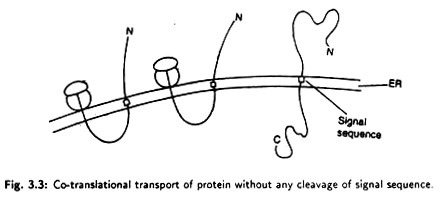1. Symmetry:
Many protozoan’s are asymmetrical because they are not divisible into equivalent parts; a few show spherical symmetry.
The cnidarians and adult echinodems are usually radially symmetrical around a median axis through the mouth; planes through this axis will divide the animal into radial sectors (antimeres).
Members of most other phyla are bilaterally symmetrical; a lengthwise vertical (sagital) plane divides the animal into equal and opposite halves.
In such animals the part that moves forward (and usually contains the mouth) is termed anterior; and the opposite end is posterioer; the back or upper surface is termed dorsal, and he under surface (usually toward the ground) is termed ventral (1.venter, belly). Structures on or toward the central longitudinal axis are termed medial, and those toward the sides are said to be lateral.
2. Segmentation:
In the annelids, arthropods, and chordates there is a linear repetition of body parts known as segmentation (metamerism); each repeated unit is a somite (metamere). In earth-worms the successive somites are essentially alike, but they are unlike in different body regions of a crayfish or insect. Metamerism is conspicuous both externally and internally in annelids, is mostly external with arthropods, and mainly internal in man and other chordates (vertebrae, body muscles, some blood vessels, and nerves).
3. Appendages:
Protruding parts that serve in locomotion, feeding, and other ways are termed appendages; examples are the tentacle of sea anemones, minute setae of earthworms, antennae and legs of arthropods, and the fins, legs, and wings of vertebrates.
4. Skeleton:
Most land dwellers and many aquatic animals have a skeleton for support or protection; it may be internal (frog, man, etc.) or external (coral, crab, insect) and may be of either inorganic or material.
5. Sex:
An animal containing both female and male sex organs in one individual is termed monoecious (also hermaphroditic); members of most higher phyla are dicoecious, each individual being either male or female.
6. Embryonic development:
Cleavage of the egg is complete or holoblastic in many invertebrates, amphioxus, amphibians, and mammals. In eggs with much yolk, cleavage is incomplete or meroblastic, confined to a limited part as in squids, insects, many fishes, reptiles, and birds.
7. Larvae:
The young stages known as larvae often provide important information on relationships not evident in adult animals. Many have features obviously adapted to particular environments such as cilia for swimming. Their basic structure, however, is usually characteristic for each phylum or class. Barnacles and tunicates, for example, were first properly classified by study of their larvae.
Many aquatic invertebrates in the protostome line have a common type of larva- minute, transparent, and free-swimming. Often it is top shaped, and encircled by two lines of cilia that beat so as to suggest a rotating wheel, hence the name trochophore (Gr. Trochos, wheel + phoros, bear). The upper end has a plate with a tuft of cilia and a sense organ. With various modifications this is the early larva of many marine flatworms, nemerteans, mollusks, and some annelids. 